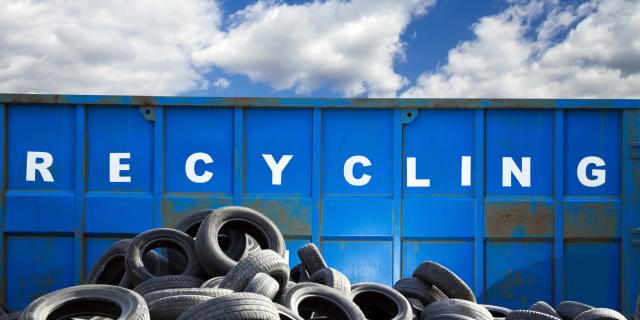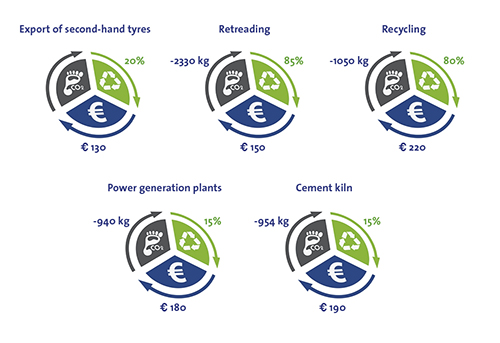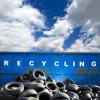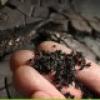Ecotest
Ecotest provides better insight into the impact of the chain
Ecotest gives a current dashboard for key parameters such as CO₂ emissions savings, costs and savings of primary raw materials. Ecotest shows that the processing of end-of-life car tyres in the Netherlands is very good with 32 million kilograms of raw material conservation and CO₂ savings of 60,000 tons.
See how RecyBEM achieves this environmental performance:
Ecotest
Ecotest is a 'decision support tool' for policy-makers looking to substantiate decisions in the area of sustainability with product chain facts that are founded on practice. It was founded based on expertise in complex chains coupled with an understanding of the climate, raw materials, recycling and the economy.
Ecotest offers the option of examining a chain in terms of the following aspects:
- Ecology (CO₂ footprint)
- Conservation of raw materials (recycling)
- Economics (costs)
Ecotest makes the impact of the product chain transparent by balancing these three elements against one another. In doing so, Ecotest uses only the most essential indicators from an LCA study (Life Cycle Assessment). This provides a better overview of the enormous number of environmental indicators. RecyBEM has been processing tyres sustainably for many years. Ecotest quantifies this sustainability by weighing up the impact of the various chain options. For example, the differences between the chain options recycling and incineration of car tyres can be compared. RecyBEM uses Ecotest to calculate the impact on the chain of new and future processing possibilities.
Result of Ecotest car tyres
RecyBEM has Ecotest conducted in collaboration with ARN. By processing 1 tonne of car tyres via the RecyBEM/ARN system, 969 kg of CO2 equivalents (CO2-eq) are saved. This compensates for approximately one third of the emissions released in the production of a new tyre (2,830 kg CO₂-eq per tonne). The graph shows the total emission saving in the blue column. The green columns reflect the absolute distribution of the score across the various chain options. The emissions for collection and transport of 26 kg CO₂-eq are easily compensated for by the savings achieved through the various chain options.
Which chain option delivers the best performance?
To answer this question, the performances of each chain option when processing 1 tonne of end-of-life car tyres were compared. The emission saving for each chain option appears in the figure alongside the recycling percentage and the costs per chain option. The costs shown are the costs from the manufacturer’s perspective.





